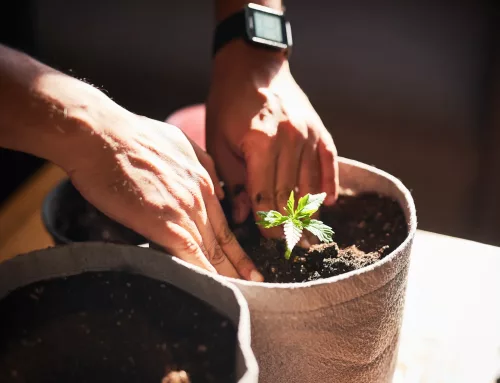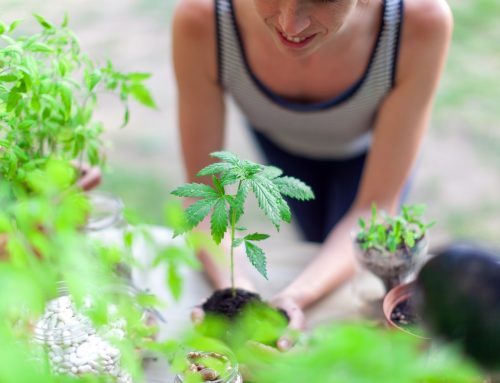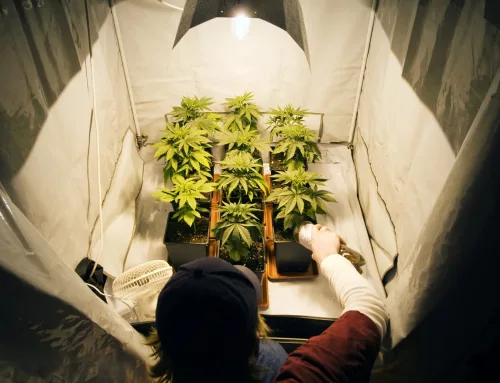Cannabis cultivation has become a sophisticated global industry that is expected to reach $6.5 billion by 2031, offering a diverse array of seeds tailored to the nuanced needs of growers. Among the choices available, two prominent types—autoflowering seeds and photoperiod seeds—have sparked considerable interest and popularity.
In this guide, we will delve into the intricacies of these cannabis seeds, equipping cannabis cultivation techs and home growers with the knowledge needed to make informed decisions that align with their cultivation goals.
The basics
Autoflowering seeds
What are autoflower seeds? Autoflower seeds can be found in various cannabis strains, encompassing a wide spectrum of expressions from both indica and sativa genetics. Autoflowering seeds are not limited to a specific strain; instead, the autoflowering trait adapts to different genetic profiles.
Autoflowering seeds are celebrated for their rapid growth cycle (typically 8-12 weeks), compact size, and suitability for novice and experienced growers alike. Unlike photoperiod seeds, there is no need to “flip” light exposure time to 12 hours of darkness to induce flowering. This characteristic makes autoflowering weed resilient and easier to grow, making them an attractive option for those new to cultivation as well as large scale producers seeking low maintenance crops.
Photoperiod seeds
What are photoperiod seeds? Photoperiod seeds offer a broad selection of cannabis cultivars, including indica, sativa, and hybrid varieties. Whether one seeks the relaxing effects of indica, the energizing qualities of sativa, or a balanced hybrid experience, photoperiod seeds provide much versatility in terms of cultivation.
Photoperiod seeds, in contrast to autoflowering, rely on changing the light exposure time to initiate the flowering stage. This unique feature provides growers with greater control over the phases of growth, but can make them a less manageable fit for novices. Experienced cultivators often prefer photoperiod seeds due to the flexibility they offer in managing the plant’s development, especially by allowing for clonal propagation from mother plants. In addition to the added benefit of clonal propagation, cultivators can control the length of the vegetative stage of growth, which they can use to manipulate the size of their plants during the flowering stage.
Growing conditions
Autoflowering seeds
The adaptability of autoflower seeds extends to their growing conditions. These seeds thrive in many environments including those with less control over lighting schedules, making them suitable for outdoor and greenhouse applications, as well as indoor cannabis cultivation. Additionally, they require less maintenance overall, making them an excellent choice for growers seeking a more hands-off approach, or large scale producers looking to reduce labor costs.
Photoperiod seeds
Photoperiod seeds demand a more disciplined approach to light cycles, which can be advantageous for growers with more control over their growing environment (relative humidity, temperature, and air flow). Cultivators who prefer more control over the size or schedule of their vegetative and flowering phases of growth often favor photoperiod seeds. Outdoor cannabis cultivation can take advantage of natural sunlight to optimize the plant’s growth potential and use the entire growing season to produce large plants ready to harvest in the fall. Indoor cultivators can keep moms, take clones on a planting schedule that suits their production needs, and veg plants for shorter periods of time to manipulate the size of the flowering plants to suit their facility or grow environment.
Yield and harvest
Autoflowering seeds
While autoflowering seeds boast a faster harvest time of roughly 8-12 weeks from seed to harvest, the trade-off is typically smaller yields per plant in an outdoor setting. However, the ability to achieve multiple cannabis harvests in a single growing season can compensate for this limitation, providing outdoor and greenhouse growers with a more continuous and consistent harvest cycle.
Photoperiod seeds
Photoperiod seeds, with their longer growth cycle of 10-16 weeks from seed to harvest, give cultivators the ultimate flexibility and control over their crop cycle as long as they have the infrastructure in place that is required. Beyond the increased control of the crop lifecycle, clonal propagation, and the ability to extend the vegetative growth period allows for genetic preservation, and may contribute to increased potency, terpene profile, and higher yields at harvest.
Suitability for growers
Autoflowering seeds
Autoflowering seeds are well suited for beginners, requiring less attention to light cycles. Their compact size and adaptability make them ideal for stealth or limited-space cultivation, providing a more accessible entry point for novice growers or those who are exclusively growing cannabis at home.
Autoflower seeds have been increasing in popularity with large scale cannabis cultivators over the last 5 years as the legal cannabis industry becomes more automated, predictable, and a need for faster growing cycles with less labor and infrastructure required is needed to meet consumer demand.
Photoperiod seeds
Photoperiod seeds are typically the preference of experienced cannabis growers seeking more control over growth stages. This makes them suitable for professional cultivators with ample space and resources, as well as those interested in experimenting with advanced cultivation techniques at home.
Choosing the right cannabis seeds for your needs
The choice between autoflowering vs photoperiod is a nuanced decision that hinges on individual preferences, experience level, and specific cultivation goals. Novice growers may find autoflowering seeds more forgiving, while experienced cultivators might appreciate the precision offered by photoperiod seeds. Research, coupled with a clear understanding of one’s needs, is key to a successful cannabis cultivation journey.
No matter which of the two you choose, Happy Valley Genetics’ high quality autoflowering cannabis seeds and photoperiod cannabis seeds are available in a variety of strains and quantities for the commercial or home grower.




